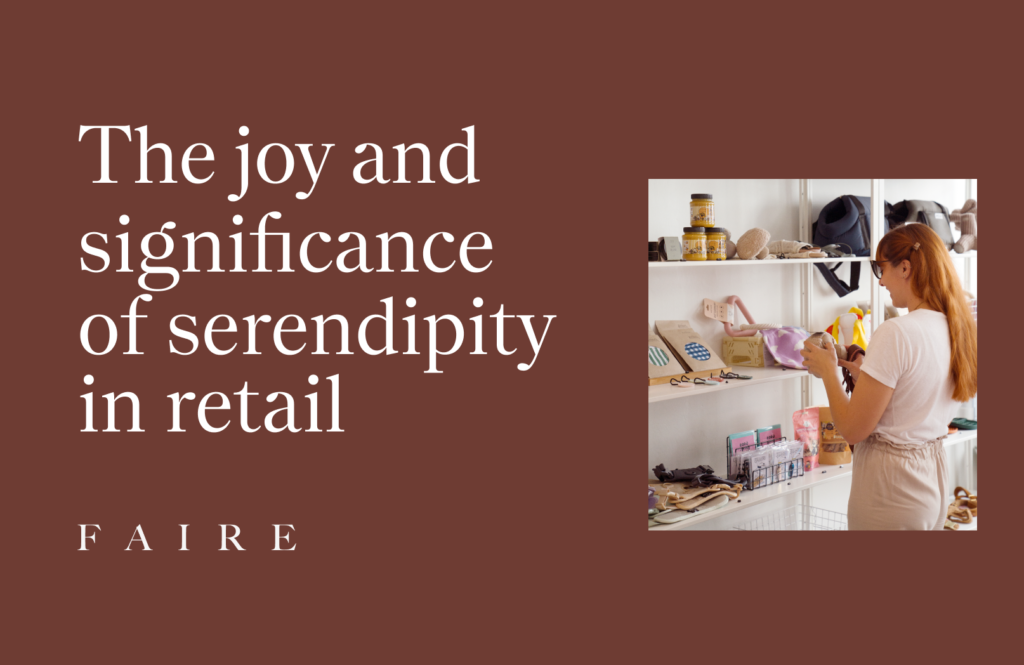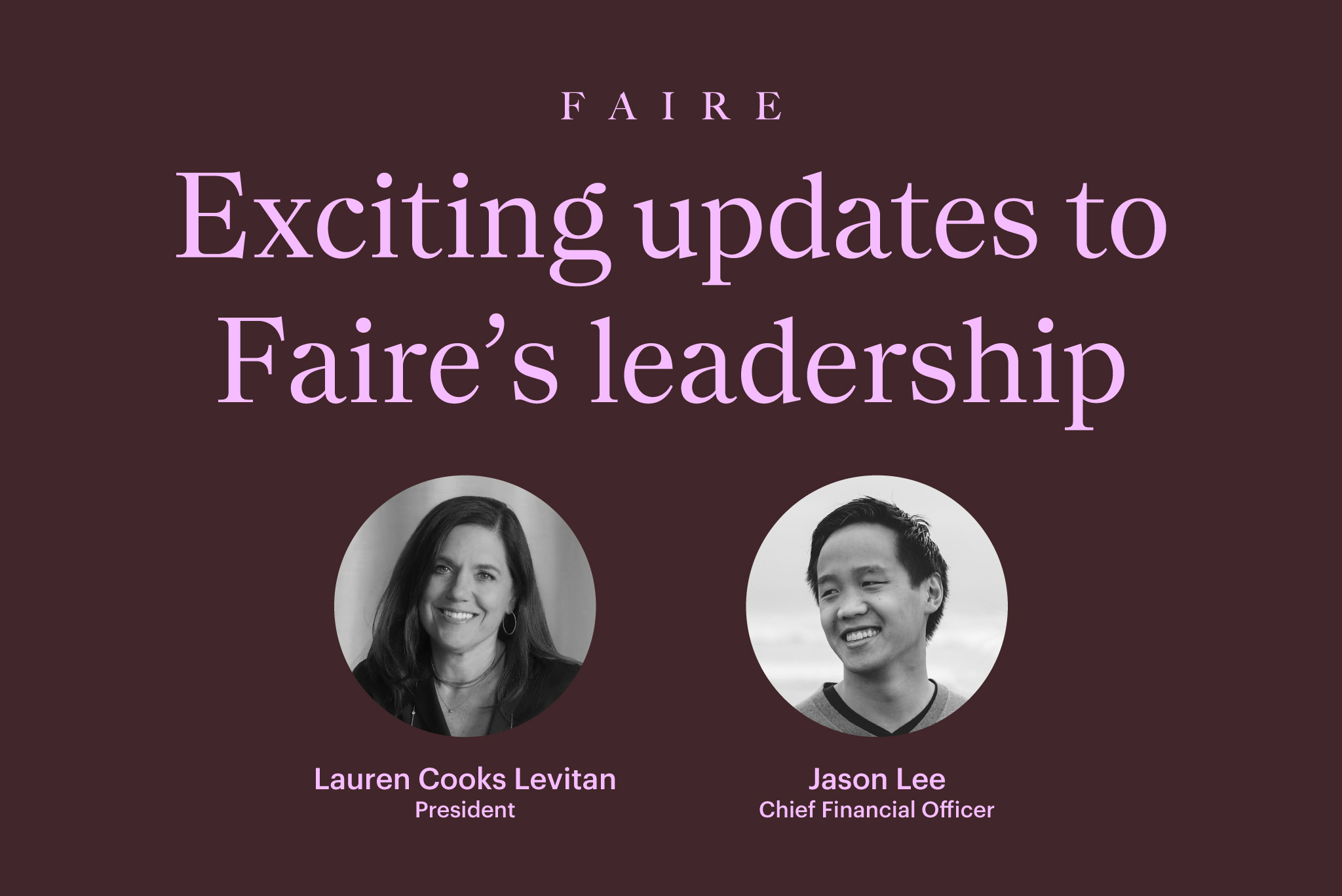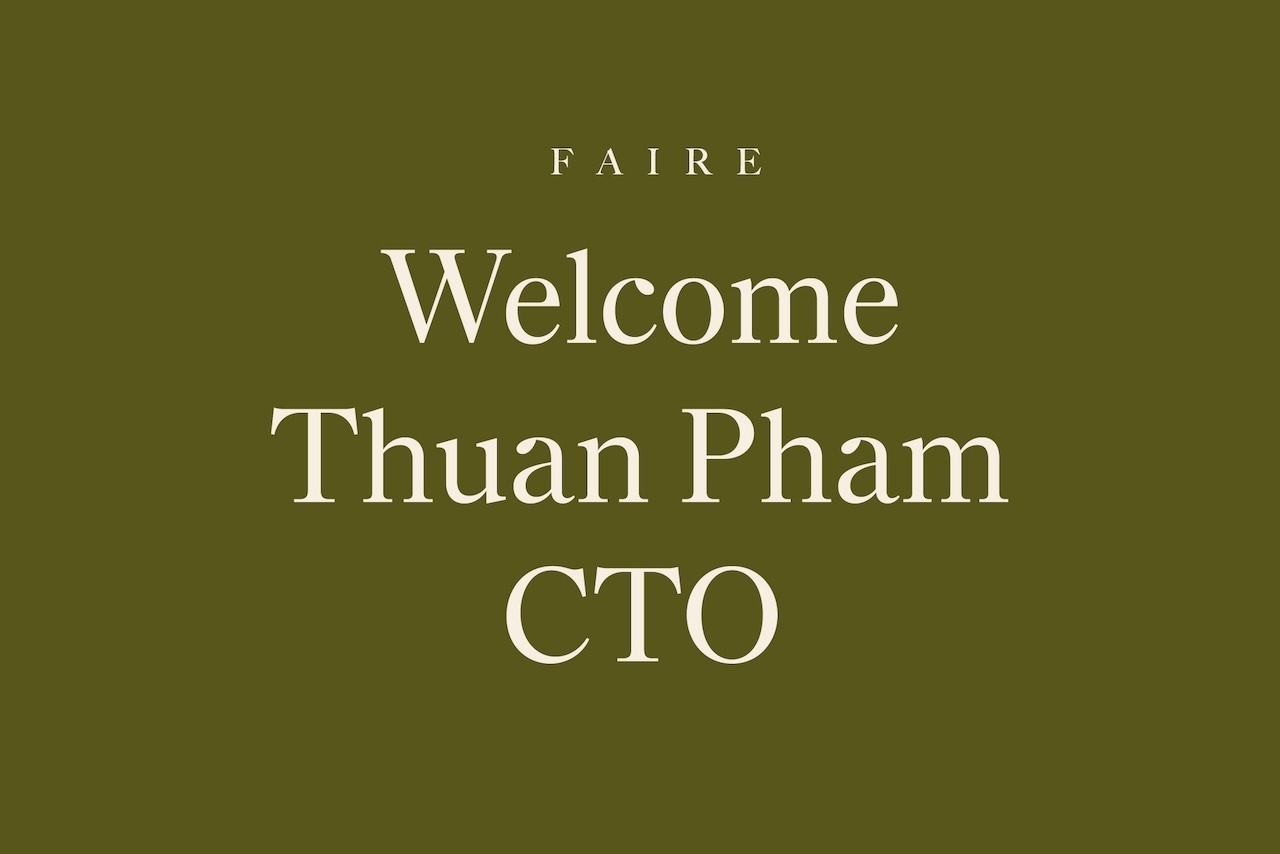Faire Report: The Joy and Significance of Serendipity in Retail
February 16, 2023 | By Faire

Retail culture has hit an inflection point – independent retail in almost every category has taken back market share from chains for years, and grew more during the height of the pandemic than in the year prior. While the internet spurred the ecommerce revolution, the pandemic renewed commitment to community, and a sentimentality for what had been lost through the digitization of consumer shopping. Today, for the first time, Faire has released a research report: The Joy and Significance of Serendipity in Retail, diving into the cultural context of serendipity and discovery and the important role it plays in the retail experience.
Serendipity and discovery today
Serendipity, or ‘happy, accidental discovery’, is a fundamental human joy and key characteristic of retail. It influences how satisfying, meaningful, and memorable consumers find a shopping experience, as well as whether they’re likely to recommend or continue to buy from a given retailer. But despite these values, much of today’s cultural and retail context – flooded with uniform ecommerce channels and chain stores – is lacking serendipity.
While algorithms revolutionized some of the more practical aspects of retail, the influence of tech has diluted the consumer delight of discovery, and depleted shopping spontaneity for years before the pandemic temporarily eliminated in-person discovery altogether. This acute change prompted by the pandemic caused a reevaluation of retail culture – with consumer mindsets shifting from efficiency as the guiding principle, towards the values of artisan culture: craftsmanship, local origin, and discovery. Now, consumers are placing more emphasis on discoverability, craving the serendipity they lost in the efficiency-focused retail experience created by the modern world.
The power of spatial design and sensory experiences
The layout, features, and design of a store powerfully affect the shopping experience. While e-retail can compete on visual stimuli, it lacks in providing a rich environment filled with multi-dimensional sensory cues like touch, smell, taste, or sound. According to a report by the Journal of Retailing and Consumer Services, consumers stay up to 51% longer in retail spaces with multisensory cues – meanwhile, a report from Accenture reveals 48% of consumers say they’ve abandoned an e-commerce site because its offerings were poorly curated. Brick-and-mortar aesthetics, from merchandise placement to lighting and color, can be used to increase the time spent in a store while also creating a higher quality shopping experience.
“Brick and mortar stores have a clear advantage over e-commerce in creating a sensory environment that fosters connection and resonates with the customer through serendipity,” said Gretchen Kroll, Vice President of Tripar International, Inc., the leading supplier of visual display products for commercial use. “While online sales are task-orientated, in-store experiences offer exploration and discovery that is only available through physical engagement.”
Connection and consumer loyalty through community
As the pandemic reignited support around local retail, offline retail spaces are increasingly reshaping themselves as community strongholds. In North America, nearly 25% of retailers who shop on Faire use a single space as both a retail shop and community hub. From candle-making workshops in artisan decor boutiques, to book signings in music stores – retail culture has shifted toward ‘retailtainment:’ collective entertainment in retail settings. As retail becomes more community-oriented, discovery becomes more of a social act.
“With consumers spending more cautiously, downsizing as they move back to cities, and craving experiences again after years of exclusively digital interactions, brands are not only becoming more intentional about what products they put in front of them, but where and how they reach them,” said Gabriela Baiter, Director of Experiential Commerce at Leaf Group and Hunker House. “When they can no longer rely on solely digital channels to cut through the noise, brands can differentiate themselves by showing up in the real world to deepen their relationships with consumers.”
Deepening emotional discovery through collaboration
At its core, retail and serendipity is a collaborative, two-sided process: an experience, as well as an environment to facilitate it. The effort and consideration made by both retailers and shoppers is a mark of distinction and value. Retailers take pride in their role as tastemakers, but there is equal cultural cachet and joy in consumer discovery. Retailers who create opportunities for shoppers to take an active role in the discovery process can better fulfill this desire for ownership over the retail experience. Whether creating opportunities for personal tastemaking or storytelling – for example, featuring products that align with consumer values like Black-owned brands, small batch artisans, or locally produced goods – retailers can appeal to consumer’s desire for values-based shopping. In turn, shoppers who feel fully emotionally connected to a brand or retailer are 52% more valuable as customers – based on purchases and frequency – according to the Harvard Business Review.
“Modern status is conveyed through storytelling,” said Ana Andjelic, Brand Executive, Author of The Business of Aspiration, and one of Forbes’ “World’s Most Influential CMOs.” “Brands tell stories of their origin, heritage, design, craftsmanship, or purpose. Consumers tell stories of how, where, when, and what they bought and through those stories provide meaning and cultural and social context to their purchases.”
Monolithic shopping in decline
Independent retail taps into the human desire for discovery and community that monolithic algorithm-driven shopping can’t achieve. It’s through artistry, curation, and a heightened focus on experience that these retailers consistently create ways to succeed. In fact, new businesses have skyrocketed as a share of Faire retailers – growing 2x since the start of the pandemic, while Faire’s total retailer population, largely consisting of single location brick-and-mortar shops, has doubled in the past year. Meanwhile, UBS predicts that in 2023, the U.S. will see increased store closures, namely from traditional shopping mall chains. This significant growth within the independent retail sector represents an inflection point in shopping culture.
Algorithms were expected to represent the final nail in the coffin, and yet local retail is thriving. Through Faire, retailers can leverage technology to better curate and enable powerful in-person shopping experiences that feed the consumer preferences of today. By helping to elevate their position within communities as serendipitous spaces for delight and discovery, Faire is fueling a shift in retail culture, and the growth of small businesses across the globe.
Download a copy of the report here.
Methodology
Faire’s cultural insights report was conducted through research of reputable secondary sources—existing journalism and cultural analysis, academic research and peer-reviewed studies, trend and futures reports, and quantitative evidence—followed by original analysis and brand case studies to illuminate cultural shifts and their applications to retail.



